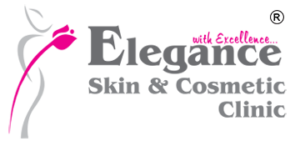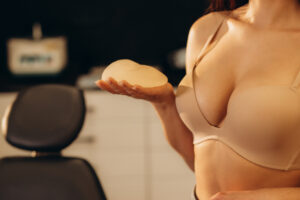Recovering from Arm Lift Surgery in Ahmedabad can be an exciting journey especially when you’re eager to get back to your regular workouts. But hold that dumbbell for a moment jumping too quickly into exercise can slow down healing and even risk complications.
Let’s break it down the right way. In this detailed guide, Dr. Ritesh Patel, cosmetic surgeon at Elegance Skin and Cosmetic Clinic, walks us through what you can and shouldn’t do after surgery so you heal faster and stronger.
What Exactly Happens in Arm Lift Surgery?
An Arm Lift Surgery, or Brachioplasty, removes sagging skin and excess fat from the upper arms. It’s especially common among people who’ve lost a lot of weight or are seeing the effects of aging in their arms.
At Elegance Skin and Cosmetic Clinic, Dr. Ritesh Patel performs advanced Arm Lift Surgery in Ahmedabad to help patients regain arm contours that match their efforts in fitness and health. But like any surgical procedure, the healing phase is crucial.
Why You Need to Put the Brakes on Workouts (Temporarily)
The first thing to understand? Exercise is off-limits in the beginning for a reason.
Once you’ve had surgery, your body needs time to repair tissues, seal incisions, and stabilize internal adjustments. Even seemingly harmless actions like lifting a shopping bag or stretching your arms can put pressure on healing tissues. Doing too much too early could lead to swelling, wound reopening, or uneven results.
For the first two weeks, avoid upper-body strain entirely. Instead, follow a recovery routine designed by your surgeon that focuses on healing first.
Week 1 to 2: Total Rest and Basic Movement
Your initial recovery phase should be all about rest, with light walking as your only form of movement.
Avoid:
- Lifting anything with your arms
- Household chores like sweeping or laundry
- Stretching or reaching overhead
- Using gym equipment of any kind
Stick to slow, short walks to keep your circulation going. Keeping your arms elevated when sleeping or resting can help reduce swelling.
If you’re being treated at Elegance Skin and Cosmetic Clinic, Dr. Ritesh Patel will provide a custom guide tailored to your recovery progress. Always follow your post-op care religiously this isn’t the time for shortcuts.
Week 3 to 5: Baby Steps Toward Activity
By the third or fourth week, your incisions will begin to heal more securely. That doesn’t mean you’re ready to run a marathon or hit the weights but it’s a time to start introducing non-arm focused movement.
You can try:
- Light-paced treadmill walks
- Stationary cycling (without engaging the arms)
- Gentle lower body stretches
Still off-limits:
- Arm workouts (including yoga, Pilates, or resistance training)
- Weightlifting
- Swimming or contact sports
It’s tempting to do more when you feel better, but true healing happens internally over time not just on the surface.
Week 6 to 8: Controlled Progression
At the six-week point, you’re likely to feel more like yourself but that doesn’t mean it’s back to business as usual. Your tissues are still sensitive, and overdoing it can backfire.
Here’s what’s usually okay:
- Lower body strength training like squats or step-ups
- Core exercises that don’t require pressure on the arms
- Light yoga, avoiding arm-bearing postures
Still avoid pushing, pulling, or lifting anything with your arms this is often the most difficult stage mentally for active individuals, but your patience will pay off in the long run.
Dr. Ritesh Patel emphasizes gradual reintroduction based on how your body responds, not based on a fixed calendar.
After 10–12 Weeks: A Safer Return to Your Workout Routine
Once the three-month milestone is crossed, you may be cleared for a full return to your fitness routine with modifications.
Begin slowly with:
- Light weights (1–2 kg)
- Controlled reps with lots of breaks
- Resistance bands (low tension)
- Stretching and mobility drills
Ease back into your upper body work. Track how your arms feel during and after sessions. Avoid anything that causes pulling or discomfort around your incisions. Progressively build your strength rather than rushing back to where you left off pre-surgery.
Pro Tips for a Smooth Recovery and Safe Fitness Comeback
- Listen to your body. Even if you’re mentally ready, your muscles and skin need time.
- Eat healing foods. Include foods rich in protein, vitamin C, and healthy fats to support tissue repair.
- Don’t skip follow-ups. Regular check-ins with Dr. Ritesh Patel help adjust your recovery plan based on your body’s progress.
- Use compression garments as prescribed. They aid in swelling control and improve surgical outcomes.
- Skip the ego lifting. Starting with light weights is not weakness it’s wisdom.
Warning Signs You’re Pushing Too Hard
Be on the lookout for:
- Sharp pain during movement
- Swelling that doesn’t subside
- Skin tightness or pulling around scars
- Redness, warmth, or discharge near incisions
If any of these occur, stop exercising immediately and contact your doctor. At Elegance Skin and Cosmetic Clinic, your safety is the top priority, and Dr. Ritesh Patel is available to reassess your progress and guide your next steps.







